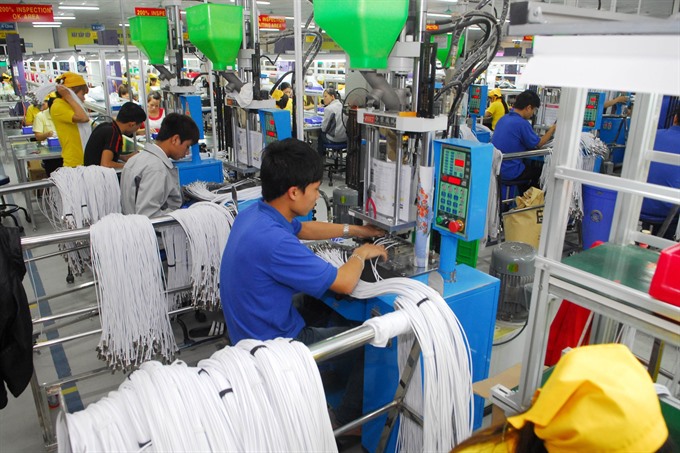 Economy
Economy

Economies in the ASEAN+3 region should enhance their connectivity, boost the service sector and develop skilled human resources in order to meet global demand, participants were told during a seminar held in Hà Nội on May 25.
 |
| A worker produces electrical cables at a factory in Điềm Thụy Industrial Park in the northern province of Thái Nguyên. Along with China and other major ASEAN economies, Việt Nam has succeeded in attracting FDI, setting up competitive production areas, generating jobs, increasing productivity and spurring exports. — VNA/VNS Photo Danh Lam |
HÀ NỘI — Economies in the ASEAN+3 region should enhance their connectivity, boost the service sector and develop skilled human resources in order to meet global demand, participants were told during a seminar held in Hà Nội on May 25.
The seminar, themed “ASEAN+3 regional economic outlook: resilience and growth in a changing world” was jointly held by the Vietnamese Ministry of Finance and the ASEAN+3 Macroeconomic Research Office (AMRO).
ASEAN+3 comprises ten member countries of the Association of Southeast Asian Nations (ASEAN), and China, Japan and the Republic of Korea (RoK).
The ASEAN group comprises Brunei, Cambodia, Indonesia, Laos, Malaysia, Myanmar, the Philippines, Singapore, Thailand and Việt Nam.
Hoe Eo Khor, chief economist of AMRO, presented a report on the ASEAN+3 regional economic outlook conducted by his office.
According to the report, with improving external demand, the region’s growth is expected to be maintained at 5.4 per cent in 2018 and 5.2 per cent in 2019.
Việt Nam’s GDP in the first quarter of this year is projected at 7.4 per cent. However, the report warned the region to remain vigilant given the significant external risks in the short term of a faster-than-expected tightening in global financial conditions and an escalation of global trade tensions.
If these risks are realised, there would be spillovers to the region through capital outflows, higher borrowing costs, and lower trade and investment flows, the report said.
To enhance resilience, the report said policymakers in the region should continue to build policy space, particularly in monetary policy, in anticipation of tighter global financial conditions ahead. Fiscal policy may have to play a greater role in supporting growth while macro-prudential policy can help safeguard financial stability, the report said.
Nguyễn Đức Thành, Director of the Việt Nam Institute for Economic and Policy Research (VEPR) said through the report, Việt Nam gets an insight into ASEAN and the Northeast Asian countries - China, Japan and the RoK. Delegates at the seminar held that regional economies have benefited from foreign direct investment (FDI) activities which look towards exports.
Along with China and other major ASEAN economies, Việt Nam has succeeded in attracting FDI, setting up competitive production areas, generating jobs, increasing productivity and spurring exports, they said.
They also pointed out challenges caused by trade protectionism, changes in the global value chains and new trends of technologies and production.
Against the backdrop, the economies should intensify regional connectivity and integration to consolidate sustainable growth against external shocks, they suggested. — VNS




